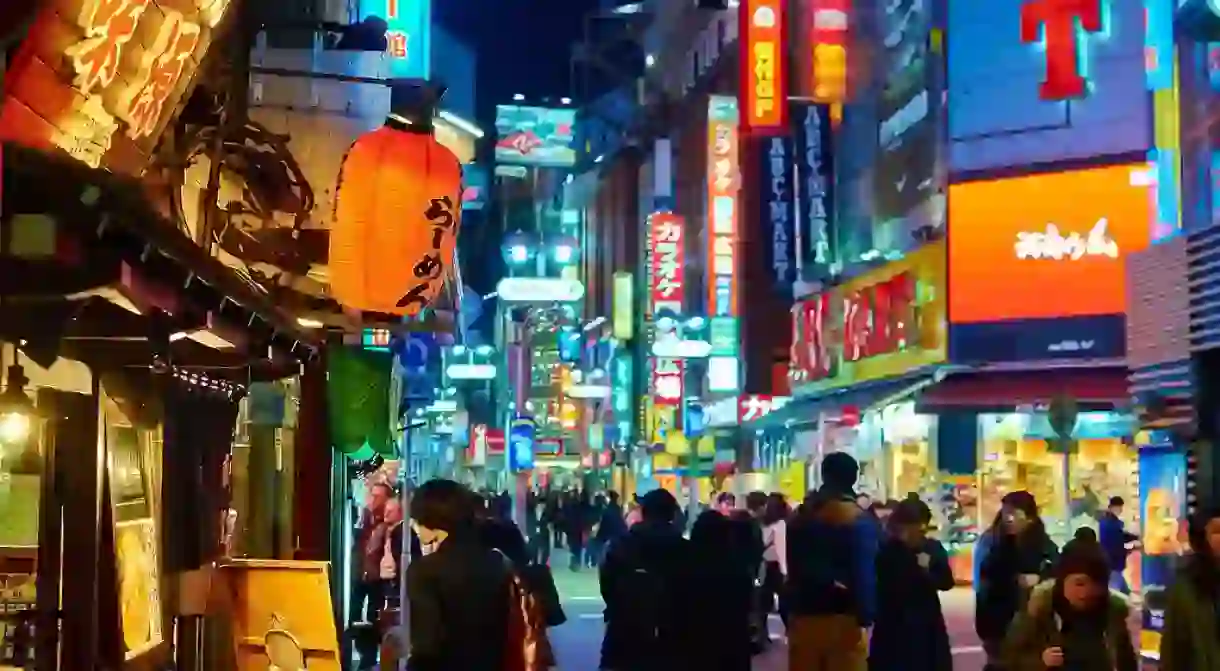Things Tourists Should Never Do While Visiting Tokyo

While most Japanese will forgive a foreign visitor their social faux pas, taking a bit of time to study the culture goes a long way toward making you and your hosts feel more comfortable. Here are some things to avoid when visiting Tokyo.
To explore the wonders of the country, from neon-lit skyscrapers to bamboo forests dotted with ancient temples, join Culture Trip’s curated 12-day trip to Japan.
Lingering over meals
In Tokyo, not all restaurants are built to accommodate a three hour dinner date or lengthy catch up session with friends. Many small, family-owned shokudo (ordinary Japanese restaurants) can only fit a few customers at a time and expect patrons to come in, eat and leave quickly so someone else can fill the chair.
Making substitutions
With the rise of food allergies and other dietary restrictions, making substitutions to your meal is becoming much more common. But in Japan, it’s still preferable not to request any changes to your meal, especially when language barriers can make it almost impossible to communicate. Find a restaurant that already caters to your needs, instead.
Tipping
Tipping is not part of Japanese culture. Service charges, if any, are included in the bill.

Talking loudly on the train
Most of the time, Tokyo’s subway cars are relatively quiet and this is how everyone likes it. Don’t talk on your phone and don’t talk loudly with your companions. If you know you’ll have to answer the phone, there are specially marked cars for that.
Taking pictures without permission
Many places in Tokyo, including some stores, malls and religious sites, don’t allow photography. If it’s been a problem in the past, there is usually a sign indicating the ban. If you’re not sure just ask. And when it comes to taking photos of people, always ask for permission first.
Wearing your shoes inside
Everyone knows that you should take your shoes off in the entrance of a private Japanese home, but this practice can also extend to other places, including onsen, the interior of some temples or shrines and even restaurants.
Blocking the escalator
In Tokyo, the left side of the escalator is for standing and the other is for walking. Don’t stop on the side meant for walking; you’ll just inconvenience those behind you and they’ll be too polite to say anything.

Getting close in public
Public displays of affection can make people uncomfortable. The same goes for hugging and kissing your new Japanese friends or acquaintances in greeting. This kind of familiarity from near-strangers is not part of the culture.
Ignoring chopstick etiquette
Don’t leave your chopsticks sticking straight up, don’t stab at your food, and don’t pass morsels from one pair directly to another. Generally, aside from the stabbing, anything you wouldn’t do with your cutlery you probably shouldn’t do with your chopsticks – banging on the table, making noise, scraping them together is all not ok.

Always expecting Western toilets
It’s true that in Tokyo you’ll almost always be able to find a Western style toilet. In fact, most Japanese toilets are even better than those commonly found in the West. But squat toilets are still common, and if you do come face to face with one, don’t panic. For many reasons, from hygiene to habit, many people actually prefer them.
Washing in the hot spring
When visiting onsen, be sure to wash yourself in the showering area before diving into the hot baths. Newer facilities may have a shower stall, but older ones expect you to sit down and wash.

Eating on the go
Eating or drinking while walking is considered by some to be messy and uncouth, not to mention inconvenient, since once you’re finished there are few public garbage disposals to get rid of the trash. Some exceptions are during festivals – many public garbage bins are set up for these – and when eating foods that won’t produce much trash, like ice cream. But most people will choose to find a place to rest before consuming their snack anyway.














